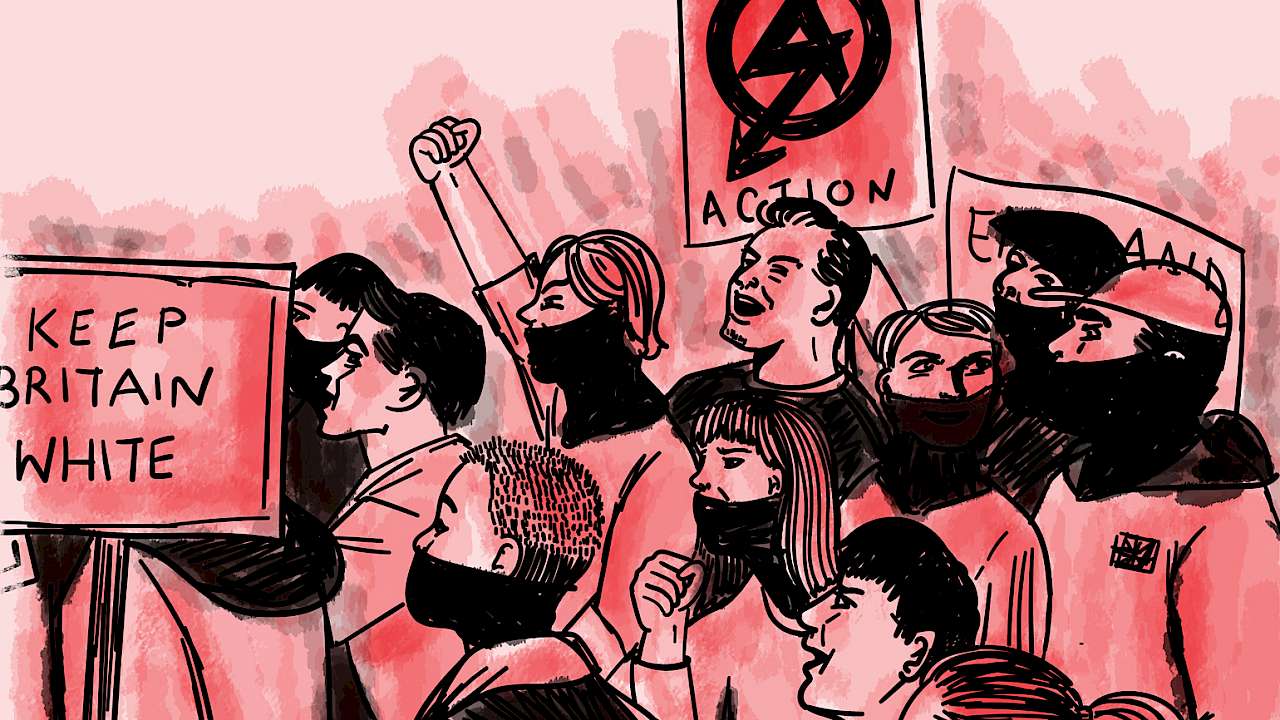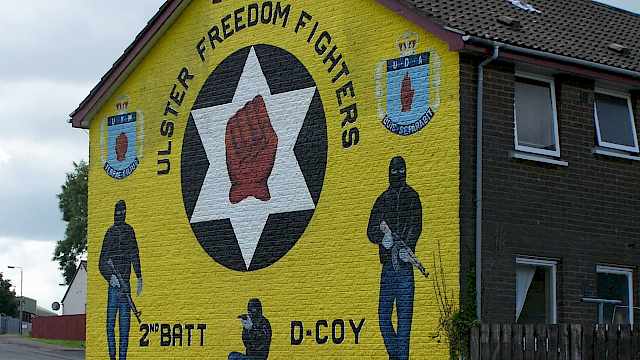There is increasing evidence of instrumental responses from some of the most extreme groups, which seek to encourage the strategic use of violence.
Reciprocal radicalisation, or cumulative extremism, is a concept that suggests extremist groups become more extreme in response to each other’s activity. This means a group may frame violence as justified or necessary because they perceive an opposing group as extreme. Identifying how to respond to such a dynamic has become increasingly important, as terrorist threats from both far-right and Islamist groups increase, alongside increased hate crime and group membership.
More research is needed to establish the extent to which extremist groups genuinely escalate in response to each other. Small groups such as the British Far-Right National Action, and their subsequent incarnations, can be particularly challenging due to the way they thrive on conflict with other groups. My own work examines individual groups at a more granular level, through which it may be possible to establish how, when, and why risks increase.
Whilst they maintained secrecy, a review of their promotional, recruitment and incitement materials reveals that they and their offshoots, (NS131, Scottish Dawn, and now System Resistance Network) have made reasonably frequent reference to Islamist extremism and hatred of Muslims when inciting members to act.
National Action formed in 2013 in response to their dissatisfaction with the reaction of the far-right to the murder of Major Lee Rigby and taking apparent inspiration from far-right terrorist attacks by Pavlo Lapshyn. They quickly escalated to criminality, violence, and support for terrorism, including harassment of an MP and violent conflict with other far-right groups. This rapid escalation suggests that the group’s formation could itself be evidence of reciprocal radicalisation processes.
In contrast, there has been little or no discernable response from Islamist groups regionally or internationally that makes reference to National Action or comparable far-right groups in general. This suggests that these far-right groups self-sustain any response to their declared opponent even when the latter is non-responsive.
The focus of National Action’s prevailing ideology was upon neo-Nazism, anti-Semitism and racism. This suggests the regular use of anti-Islam themes was primarily a strategic choice, to seek to increase recruitment within the context of increasingly anti-Islam narratives.
They weaved prejudice about Muslims into a broader narrative about ‘inevitable race war’, presenting Islamist attacks as orchestrated by Jewish interests. Violent responses by the far-right were presented as inevitable and to be celebrated.
Consequently, whilst their internal rhetoric was primarily anti-Semitic, they primarily targeted Muslims and immigrants at demonstrations and harassment stunts. They made frequent visits to areas such as Rotherham and Leeds, seeking to create fears of ‘Muslim grooming gangs’ following the Rotherham arrests.
This implies a conscious and deliberate targeting strategy by the leadership. As the group became more active online and on the streets during 2015 and 2016, instances of violence and criminality also increased. These included a small number of serious offences, including a racially-motivated attempted beheading by Zack Davies in 2015, and the glorification of right-wing terrorist Thomas Mair, who murdered the British MP Jo Cox in 2016.
Around a third of these incidents arose within a week or two of Islamist terrorist attacks in Europe or the United States, although there were other significant attacks where no such response followed.
The other notable way in which National Action’s extremism intensified in response to Islamist terrorism was in their stated intention to ‘learn from (their) enemies’. They expressed admiration for Islamist terrorists, and on several occasions sought to motivate their members by commending Islamist terrorists for their ‘commitment’ and ‘organisation’.
This was followed by a recruitment campaign centred on ‘white jihad’, as well as training camps using an Islamist terrorist video. This indicates a tactical and instrumental response, often prompting an expressively violent response from members.
This indicates a tactical and instrumental response, often prompting an expressively violent response from members.
The group’s propaganda reflects that these escalations had complex roots, which related not only to perceptions of opposing groups, but also competition within the far-right. Their behaviour alludes to a long-wave response to Islamist terrorism. Reciprocal radicalisation could consequently be viewed as a phenomenon which operates across movements, as well as between groups. The fluidity within the far-right creates conditions where more extreme and knowledgeable individuals can move between groups, increasing the risk of a ripple effect in support for violent extremism.
Responding to and preventing instrumental activity from groups can be particularly challenging, due to the way they may obfuscate and delay plans, as well as the unpredictable way in which individual members may respond to disruption.
Responses also need to take account of the way reactions to designated enemies can occur some time after conflict is assumed to have subsided, as well as anticipating potential responses to Islamist attacks, and other significant events which may increase group competition, as reflected by National Action’s increased activity during the EU referendum.
Increased competition within the far-right appears to exacerbate these problems. While proscription has restricted National Action’s former members, the way in which they have quickly and repeatedly remobilised reflects that threats are likely to remain more diffuse, including from those on the periphery, and lone actors.
With this in mind, a long-term approach aimed at reducing community polarisation and hate crime is needed, alongside direct interception. The behaviour of National Action also suggests risks may intensify for some time before a group or its members use violence, meaning that a reduction in immediate warning signs may be misleading. As such, approaching reciprocal radicalisation as a gradual and longer-term phenomenon may be necessary.
Read more
- Gavin Bailey, Phil Edwards. 2017. Rethinking Radicalisation: Microradicalisations and reciprocal radicalisation as an intertwined process, Journal for Deradicalisation, 10: 255-281. Available at: https://goo.gl/x5seVc
- Douglas Pratt. 2015. Islamophobia as Reactive Co-Radicalization, Islam and Christian–Muslim Relations, 26(2): 205-218. Available at: https://goo.gl/x5seVc
- Roger Eatwell. 2006. Community Cohesion and Cumulative Extremism in Contemporary Britain, The Political Quarterly 77 (2): 204–216. Available at: https://goo.gl/G4YvhY
- Matthew Feldman. 2015. From Radical-Right Islamophobia to ‘Cumulative Extremism’, Faith Matters. Available at: https://goo.gl/M27yY7
- Matthew Goodwin & Jocelyn Evans, From voting to violence? Far right extremism in Britain, Channel 4. Available at: https://goo.gl/ytgES5
- Steven Chermak, Joshua Freilick, Michael Suttmoeller. 2013. The Organizational Dynamics of Far-Right Hate Groups in the United States: Comparing Violent to Nonviolent Organizations, Studies in Conflict and Terrorism, Vol 36 (3): 193-218. Available at: https://goo.gl/knGSWb
Copyright Information
As part of CREST’s commitment to open access research, this text is available under a Creative Commons BY-NC-SA 4.0 licence. Please refer to our Copyright page for full details.
IMAGE CREDITS: Copyright ©2024 R. Stevens / CREST (CC BY-SA 4.0)







